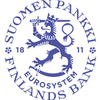BOFIT Forecast for Russia 2024–2026: Russian economic growth set to decelerate
The Bank of Finland Institute for Emerging Economies (BOFIT) expects Russian economic growth to begin slowing this year. While 2024 growth should be around 2 %, annual growth of around 1 % is expected for 2025 and 2026. Short-sighted economic policies and the course of the war create significant uncertainty to the forecast.

Last year Russia’s economy outperformed the expectations of most forecasters. In particular, growth in capital stock and private consumption accelerated faster than expected. The significant leap in the capital stock reflected higher investment in defence industries and companies stocking up for uncertain times ahead. Inventory growth has been driven by ever-intensifying component shortages.
Following the post-invasion drop in 2022, private consumption, lifted by hefty wage increases and a low basis reference, recovered rapidly last year. The potential for higher on-year growth this year is limited above all by capacity constraints.
“Russia’s economy will not only grow more slowly in the years ahead but will also be increasingly driven by the state. Growth in the next few years is limited by Russia’s low potential long-term growth potential, which has been further reduced since Russia’s invasion of Ukraine,” reports BOFIT senior economist Sinikka Parviainen.
Growth boosted by war spending
Russian economic growth will likely slow this year. Even if quarterly growth were to stall completely for all of 2024, the rapid growth in the second half of 2023 would still be sufficient to lift the pace of on-year growth this year to around 2 %. In the absence of major surprises, the Russian economy in 2025 and 2026 should grow at roughly 1 % a year, which in proximity to its long-term potential growth rate.
Soaring public spending should be the largest driver of growth throughout the forecast period. Some of Russia’s robust military spending will be channelled to fixed investment.
“The issue with wartime fixed investment,” notes Parviainen, “is that it often does little to increase the stock of productive capital or raise productivity. In fact, a significant chunk of wartime investment goods are consumed or destroyed over a short time span.”
Russia’s second engine of growth, private consumption, will be sustained by full employment. Many branches already face severe labour shortages, making further wage hikes almost inevitable. On the other hand, it is unlikely that Russia’s export markets will expand much in the years ahead. Imports, too, are limited by a range of factors, including Western sanctions.
Our latest forecast is again subject to a high uncertainty. The unavailability of critical statistical data is only one of the many factors that make analysis of current conditions challenging. Moreover, a change in the course of the war or blowback from Russia’s current short-sighted economic policies could have profound impacts on future trends in the Russian economy.
The forecast document is posted at https://www.bofit.fi/en/forecasting/latest-forecast-for-russia/.
For further information:
- Iikka Korhonen, head of research, iikka.korhonen@bof.fi, +358 9 183 2272
- Sinikka Parviainen, Senior Economist, sinikka.parviainen@bof.fi, +358 9 183 2024
Keywords
Links
The Bank of Finland is the national monetary authority and central bank of Finland. At the same time, it is also a part of the Eurosystem, which is responsible for monetary policy and other central bank tasks in the euro area and administers use of the world’s second largest currency – the euro.
Subscribe to releases from Suomen Pankki
Subscribe to all the latest releases from Suomen Pankki by registering your e-mail address below. You can unsubscribe at any time.
Latest releases from Suomen Pankki
Eurosystemets penningpolitiska beslut18.7.2024 15:25:00 EEST | Uutinen
ECB:s pressmeddelande 18 juli 2024 ECB-rådet beslutade idag att hålla de tre styrräntorna oförändrade. Inkommande uppgifter ger i stort sett stöd åt ECB-rådets tidigare bedömning av inflationsutsikterna på medellång sikt. Även om vissa mått på underliggande inflation tickade upp i maj, beroende på engångsfaktorer, var de flesta mått antingen stabila eller sjönk i juni. I linje med förväntningarna har inflationseffekten av lönetillväxt dämpats av vinster. Penningpolitiken håller finansieringsförhållandena restriktiva. Samtidigt är det inhemska pristrycket fortsatt högt, tjänsteinflationen förhöjd och den totala inflationen lär sannolikt ligga kvar över målet en bra bit in på nästa år. ECB-rådet är fast beslutet att säkerställa att inflationen inom rimlig tid återgår till 2-procentsmålet på medellång sikt. Styrräntorna kommer att hållas tillräckligt restriktiva under så lång tid som behövs för att uppnå detta mål. ECB-rådet kommer att fortsätta att följa ett databeroende tillvägagångssät
ECB Monetary policy decisions18.7.2024 15:25:00 EEST | News
ECB press release 18 July 2024 The Governing Council today decided to keep the three key ECB interest rates unchanged. The incoming information broadly supports the Governing Council’s previous assessment of the medium-term inflation outlook. While some measures of underlying inflation ticked up in May owing to one-off factors, most measures were either stable or edged down in June. In line with expectations, the inflationary impact of high wage growth has been buffered by profits. Monetary policy is keeping financing conditions restrictive. At the same time, domestic price pressures are still high, services inflation is elevated and headline inflation is likely to remain above the target well into next year. The Governing Council is determined to ensure that inflation returns to its 2% medium-term target in a timely manner. It will keep policy rates sufficiently restrictive for as long as necessary to achieve this aim. The Governing Council will continue to follow a data-dependent and
EKP:n rahapoliittisia päätöksiä18.7.2024 15:25:00 EEST | Uutinen
EKP:n lehdistötiedote 18.7.2024 EKP:n neuvosto päätti tänään pitää EKP:n kolme ohjauskorkoa ennallaan. Tuoreimmat tiedot tukevat yleisesti EKP:n neuvoston aiempaa arviota keskipitkän aikavälin inflaationäkymistä. Vaikka jotkin pohjainflaation mittarit nousivat toukokuussa kertaluonteisten tekijöiden vuoksi, valtaosa mittareista pysyi ennallaan tai laski kesäkuussa. Palkkojen nopean nousun vaikutusta inflaatioon on odotusten mukaisesti vaimennettu voitoilla. Rahoitusolot ovat kireät rahapolitiikan vuoksi. Euroalueen sisäiset hintapaineet ovat edelleen korkeat, palvelujen hintainflaatio on nopeaa ja kokonaisinflaatio pysynee tavoitetta nopeampana vielä hyvän aikaa ensi vuoden puolellakin. EKP:n neuvosto pyrkii määrätietoisesti varmistamaan, että keskipitkän aikavälin inflaatiovauhti palautuu kohtuullisessa ajassa kahden prosentin tavoitteen mukaiseksi. Tavoitteen saavuttamiseksi ohjauskorot pidetään riittävän rajoittavina niin kauan kuin on tarpeen. EKP:n neuvosto määrittää rajoittavuude
Bank of Finland conference discussed monetary policy decision-making and implementation in low and high inflation environments28.6.2024 11:12:55 EEST | News
Going forward, the monetary policy strategy should be designed in a way that ensures price stability in the face of great uncertainty. This will require it to be flexible enough to work well in different environments and react to new and unknown shocks, Bank of Finland Governor Olli Rehn stressed on Wednesday at an international monetary policy conference organised by the Bank of Finland in Helsinki.
Suomen Pankin konferenssissa keskusteltiin rahapolitiikan päätöksenteosta sekä toimeenpanosta hitaan ja nopean inflaation kausina28.6.2024 11:12:51 EEST | Uutinen
Rahapolitiikan strategia tulee jatkossa suunnitella siten, että se varmistaa hintavakauden myös suuren epävarmuuden vallitessa. Tämä edellyttää strategialta riittävää joustavuutta, jotta se toimii hyvin eri ympäristöissä ja vastaa uusiin ja ennalta arvaamattomiin häiriöihin, Suomen Pankin pääjohtaja Olli Rehn painotti keskiviikkona Suomen Pankin järjestämässä kansainvälisessä rahapolitiikkakonferenssissa Helsingissä.
In our pressroom you can read all our latest releases, find our press contacts, images, documents and other relevant information about us.
Visit our pressroom